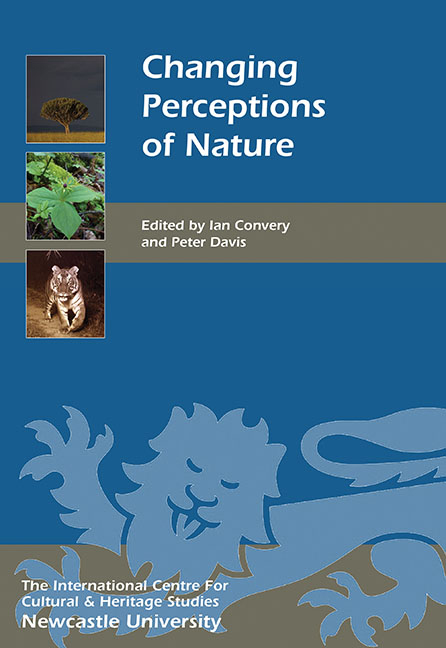Book contents
- Frontmatter
- Contents
- List of Illustrations
- Acknowledgments
- List of Abbreviations
- Foreword
- Introduction
- HISTORICAL PERSPECTIVES ON NATURE
- COLLECTING NATURE
- 7 Renaissance Collecting and Understanding of the Natural World
- 8 Botanical Collecting, Herbaria and the Understanding of Nature
- 9 Taxidermy and the Representation of Nature
- 10 The Significance of Natural History Collections in the Twenty-first Century
- INTERPRETING NATURE AND LANDSCAPES
- CONSERVING NATURE
- PEOPLE–NATURE INTERACTIONS
- List of Contributors
- Index
- Miscellaneous Endmatter
9 - Taxidermy and the Representation of Nature
from COLLECTING NATURE
Published online by Cambridge University Press: 26 October 2017
- Frontmatter
- Contents
- List of Illustrations
- Acknowledgments
- List of Abbreviations
- Foreword
- Introduction
- HISTORICAL PERSPECTIVES ON NATURE
- COLLECTING NATURE
- 7 Renaissance Collecting and Understanding of the Natural World
- 8 Botanical Collecting, Herbaria and the Understanding of Nature
- 9 Taxidermy and the Representation of Nature
- 10 The Significance of Natural History Collections in the Twenty-first Century
- INTERPRETING NATURE AND LANDSCAPES
- CONSERVING NATURE
- PEOPLE–NATURE INTERACTIONS
- List of Contributors
- Index
- Miscellaneous Endmatter
Summary
In today's museums, teams aim to display and interpret their collections of natural history in interactive, narrative and accessible formats (as evidenced in new displays around the world). These modern ‘representations’ of nature in the museum are the result of centuries of natural history collecting, preserving, interpreting and displaying.
This chapter will examine taxidermy: the earliest proponents of taxidermy and its development as a science and art, and then delve into the contemporary representations of nature, through the use of taxidermy, in modern displays.
TAXIDERMY: THE SCIENCE AND THE ART
The origins of ‘organised’ natural history displays can be traced to the Wunderkammern (or cabinets of curiosities) that emerged in mid-fifteenth-century Europe, where the beginnings of systematic accumulations of rare and wondrous objects led to their arrangement in cabinets or dedicated rooms. These collections were symbolic: a way for aristocrats to flaunt their wealth and connections, perceived knowledge and expertise, and high societal presence to other elite counterparts (Bounia 2004). At that time, few specimens were true taxidermied examples, owing to the crude nature of preservation techniques. However, concurrently, naturalists and apothecaries such as James Petiver, Pierre Belon, Francesco Calzolari and Ferrante Imperato were beginning to experiment with new preservation techniques including the use of salts, spices and spirits (see Findlen 1996; Pearce and Arnold 2000, 78; Poliquin 2012). The art of taxidermy continued to be defined and refined during the eighteenth century, by such naturalists as Rene-Antoine Ferchault de Reaumur, and were displayed simply in cabinets for audiences to consume.
The dawn of the nineteenth century brought with it new publications on skin preservation. In 1817 Bullock authored and self-published A Concise and Easy Method of Preserving Subjects of Natural History, in which he advocated the use of arsenic to taxidermise specimens efficiently. Much of the arsenic methodology stemmed from the work of apothecary and naturalist Jean-Baptiste Becoeur, American naturalist Charles Wilson Peale, taxidermist and curator of the Museum national d'histoire naturelle Louis Dufresne and Dutch aristocratic zoologist Coenraad Jacob Temminck (see Farber 1977).
And it was these taxidermic techniques that allowed collectors, such as Bullock, to consider new lifelike presentations of static nature.
- Type
- Chapter
- Information
- Changing Perceptions of Nature , pp. 99 - 106Publisher: Boydell & BrewerPrint publication year: 2016

